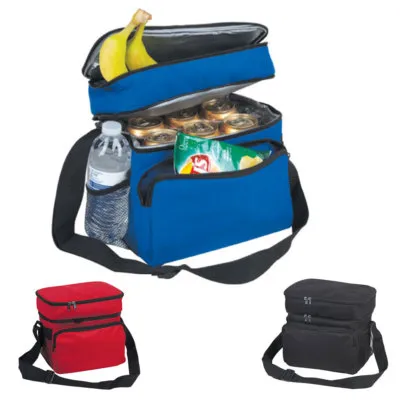Reducing lead times in bulk bag orders is critical for businesses relying on efficient supply chains. This article outlines ten proven strategies grounded in logistics and inventory best practices to help buyers minimize delays and ensure timely delivery.

To reduce lead times in bulk bag orders, companies must streamline their procurement, improve communication with suppliers, and use technology to automate inventory and fulfillment processes.
Lead time delays can disrupt entire operations. These ten tips will help you gain more control and stability in your bulk bag procurement process.
1. Prioritize Local or Domestic Suppliers

Choosing suppliers closer to your location can significantly cut lead times[^1]. Domestic sourcing avoids international customs delays and reduces shipping transit time.
Benefits of Domestic Sourcing
| Factor | Local Supplier | Overseas Supplier |
|---|---|---|
| Shipping Time | 1–5 days | 15–60 days |
| Customs Clearance | Not required | 2–10 days |
| Communication Ease | High | Moderate to low |
| Flexibility | Higher | Lower |
Focusing on nearby vendors also gives you more opportunities to visit factories and build better relationships. However, local options may cost more. So, weigh time savings against unit price based on your business needs.
2. Increase Order Frequency with Smaller Batches

Instead of placing one large order per quarter, consider ordering smaller quantities more often. This reduces waiting time between stockouts and restocks.
Frequency vs Volume Trade-Off
| Order Strategy | Pros | Cons |
|---|---|---|
| Larger, Infrequent | Lower unit cost | Long lead time |
| Smaller, Frequent | Faster replenishment | Higher shipping cost |
Many buyers hesitate due to perceived inefficiencies. However, for high-turnover products, smaller orders can ensure consistent availability without tying up capital in excessive inventory.
3. Include Suppliers in Demand Forecasting

Suppliers cannot prepare for your needs if they don’t see them coming. Sharing your demand forecasts helps them plan their raw materials and capacity better.
Shared Forecasting: Why It Works
| Benefit | Supplier Outcome |
|---|---|
| Better visibility | Raw materials ordered earlier |
| Consistent communication | Scheduling conflicts avoided |
| Anticipated spikes | Production scale-up possible |
Set up a routine to send monthly or quarterly forecasts. This reduces the chances of last-minute shortages or delays due to unprepared suppliers.
4. Foster Clear and Consistent Communication with Suppliers

Poor communication can cause missed deadlines and production errors. Establish structured, routine communications with your suppliers.
Communication Checklist
- Use written purchase orders with exact specs.
- Schedule regular video or phone check-ins.
- Use one centralized point of contact.
- Create shared project management dashboards.
These practices create transparency and accountability. They also help spot issues early before they cause production setbacks.
5. Integrate Systems and Automate Processes

Manual workflows create errors and slowdowns. Use integrated software to connect inventory, purchasing, and logistics data.
Tools for Automation
| System Type | Function |
|---|---|
| ERP (Enterprise Resource Planning) | Combines orders, stock, and accounting |
| SCM Software | Tracks vendor orders in real time |
| EDI (Electronic Data Interchange) | Automates order entry |
Automation reduces errors from retyping, enables faster decisions, and gives real-time visibility into supply stages. For growing companies, these tools offer scalable solutions.
6. Optimize Inventory Management

Managing the right stock levels ensures you’re not caught short. Use reorder points and safety stock to buffer demand spikes.
Sample Inventory Settings
| Metric | Description |
|---|---|
| Reorder Point | When stock hits X, reorder |
| Safety Stock | Extra to cover delays |
| Lead Time Demand | Sales forecast x lead time |
Avoid stockouts that halt operations or overstocking that ties up cash. Adjust thresholds regularly based on consumption rates and lead time trends.
7. Coordinate Logistics Efficiently

Shipping inefficiencies extend lead times. Work with reliable carriers and consolidate loads where possible.
Logistics Optimization Tips
- Use shipment tracking to stay updated.
- Partner with logistics providers offering guaranteed delivery windows.
- Schedule pickups to align with production completion.
Delays in shipping are often preventable. A proactive approach helps you react quickly to issues like weather or port delays.
8. Identify and Eliminate Bottlenecks and Inefficiencies

Process delays often stem from predictable problems—slow machines, inefficient layouts, or staff shortages. Use analytics to pinpoint these.
Common Bottleneck Areas
| Area | Potential Issue |
|---|---|
| Production Line | Machine downtime |
| Quality Control | High rejection rate |
| Order Processing | Manual entry delays |
Conduct regular audits. Create heat maps of lead time delays. Then, assign dedicated teams to fix recurring problems systematically.
9. Automate Order Entry and Processing

Manual order entry leads to errors and slows down fulfillment. Switch to digital forms and automated systems to speed up order input.
Why Automation Helps
| Manual Entry | Automated Entry |
|---|---|
| Slow and prone to error | Instant processing |
| Needs staff oversight | Runs in the background |
Buyers often lose time waiting for internal order approvals. Streamlined systems ensure orders move into production queues without delay.
10. Leverage Technology to Work Smarter

Use warehouse automation and smart systems to boost throughput. Technology can reduce delays in picking, packing, and shipping.
Examples of Smart Fulfillment Tools
| Tool Type | Benefit |
|---|---|
| Conveyor systems | Faster order movement |
| Robotics | Faster picking and packing |
| Barcode scanning | Reduces picking errors |
These tools don’t just cut lead time—they also reduce labor costs. Smart systems help you handle high volume orders efficiently during peak seasons.
Conclusion
Reducing lead times for bulk bag orders means improving every step—from supplier selection to warehouse handling. Choosing closer suppliers, automating order processes, and sharing forecasts can make a big difference.
From our experience in bulk bag production and export, real-time communication and proactive inventory management[^2] often have the highest impact. Businesses that optimize their supply chain workflows[^3] see faster turnaround and fewer disruptions.
If you have your own strategies or face unique challenges, share your thoughts in the comments!
---
[^1]: Understanding lead time reduction strategies can significantly enhance your supply chain efficiency.
[^2]: Effective inventory management ensures you have the right stock levels at all times.
[^3]: Optimizing supply chain workflows can lead to faster turnaround and fewer disruptions.








